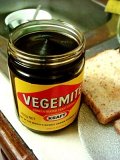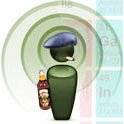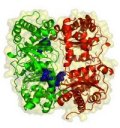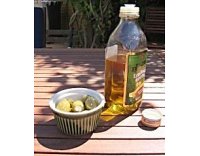 And you thought Brussels was crazy for banning bananas that were too curved, for forcing manufacturers to relabel brandy butter as “modified distilled wine spreadable fat product”, and for limiting pizzas to an eleven-inch standardised diameter only! Now, the US is searching Aussies coming into the country to make sure they’re not bringing that most infamous of products with them – Vegemite!
And you thought Brussels was crazy for banning bananas that were too curved, for forcing manufacturers to relabel brandy butter as “modified distilled wine spreadable fat product”, and for limiting pizzas to an eleven-inch standardised diameter only! Now, the US is searching Aussies coming into the country to make sure they’re not bringing that most infamous of products with them – Vegemite!
According to News.com.au, the iconic spreadable brown stuff in a jar is faithfully carried around the world by travellers from down under. But, a legal technicality in the US means that only breads and cereals are allowed to contain added folic acid (aka folate or vitamin B9), so Vegemite has become hot outlaw property.
A spokeswoman for the manfacturer Kraft, Joanna Scott said: “The (US) Food and Drug Administration doesn’t allow the import of Vegemite simply because the recipe does have the addition of folic acid.” She added that the US is actually only “a minor market” for Vegemite.
Presumably, the reason the folate law exists is to prevent manufacturers of other products from cashing in on folate health publicity surrounding folic acid and campaigns aimed at women hoping to get pregnant but reduce the risk of their child having spina bifida. But, Vegemite, Australians will tell you, is almost as old as toast itself. Its certainly something most will be very reluctant to give up in the final count. If the “ban” persists one can anticipate a rather rapid decline in quality bar staff across the US, especially among those who can mix a Singapore sling and play the digeridoo. Or, maybe the whole story is simply a PR campaign in itself aimed at boosting the Vegemite share price and Aussie bar staff will be able to cope just fine!
 As antibiotics fall to bacterial resistance one by one, it is essential that medicinal chemists keep ahead of the game by finding compounds with new modes of attack. Recently a new antibiotic, platensimycin has been found to act potently through a novel mechanism. Now, US chemists have devised a total synthesis for this unique compound and tracked their progress using mass spectrometry and NMR spectroscopy.
As antibiotics fall to bacterial resistance one by one, it is essential that medicinal chemists keep ahead of the game by finding compounds with new modes of attack. Recently a new antibiotic, platensimycin has been found to act potently through a novel mechanism. Now, US chemists have devised a total synthesis for this unique compound and tracked their progress using mass spectrometry and NMR spectroscopy. I received a job ad indirectly from the Living Fuel website today, it seemed like a fairly run of the mill science writing job asking for a ghost writer-researcher to assist in writing a weekly health newsletter etc…
I received a job ad indirectly from the Living Fuel website today, it seemed like a fairly run of the mill science writing job asking for a ghost writer-researcher to assist in writing a weekly health newsletter etc… The day the UK’s medicines approval agency NICE, announces that certain Alzheimer’s drugs are to be limited to those in the latter stages of the disease to get the best value for money, I read a Nature press release announcing a novel approach to treating the disease based on supercharging an enzyme that looks like the video game character Pac-man. US researchers have determined the crystal structure of a protein-degrading enzyme as it binds to its natural protein substrates.
The day the UK’s medicines approval agency NICE, announces that certain Alzheimer’s drugs are to be limited to those in the latter stages of the disease to get the best value for money, I read a Nature press release announcing a novel approach to treating the disease based on supercharging an enzyme that looks like the video game character Pac-man. US researchers have determined the crystal structure of a protein-degrading enzyme as it binds to its natural protein substrates. I received a press release today from a US company addressing me by name and asking me whether I’d like to write about nanocardiology. Apparently, the company has a nanotech product in pre-clinical trials that cleans up arterial plaques. The putative product from St Louis company Kereos is based on endothelial alpha-v-beta-3 integrin-targeted fumagillin nanoparticles and can seek out markers for arterial plaques and help break them down.
I received a press release today from a US company addressing me by name and asking me whether I’d like to write about nanocardiology. Apparently, the company has a nanotech product in pre-clinical trials that cleans up arterial plaques. The putative product from St Louis company Kereos is based on endothelial alpha-v-beta-3 integrin-targeted fumagillin nanoparticles and can seek out markers for arterial plaques and help break them down. Extracting oil from olives requires solvents and residues of halogenated solvent can sometimes leave a toxic taint in the product. European Union rules restricted the acceptable levels of these residues for the sake of public health but new sensitive and precise analytical procedures are needed to allow strict quality control and regulatory testing to be carried out.
Extracting oil from olives requires solvents and residues of halogenated solvent can sometimes leave a toxic taint in the product. European Union rules restricted the acceptable levels of these residues for the sake of public health but new sensitive and precise analytical procedures are needed to allow strict quality control and regulatory testing to be carried out.